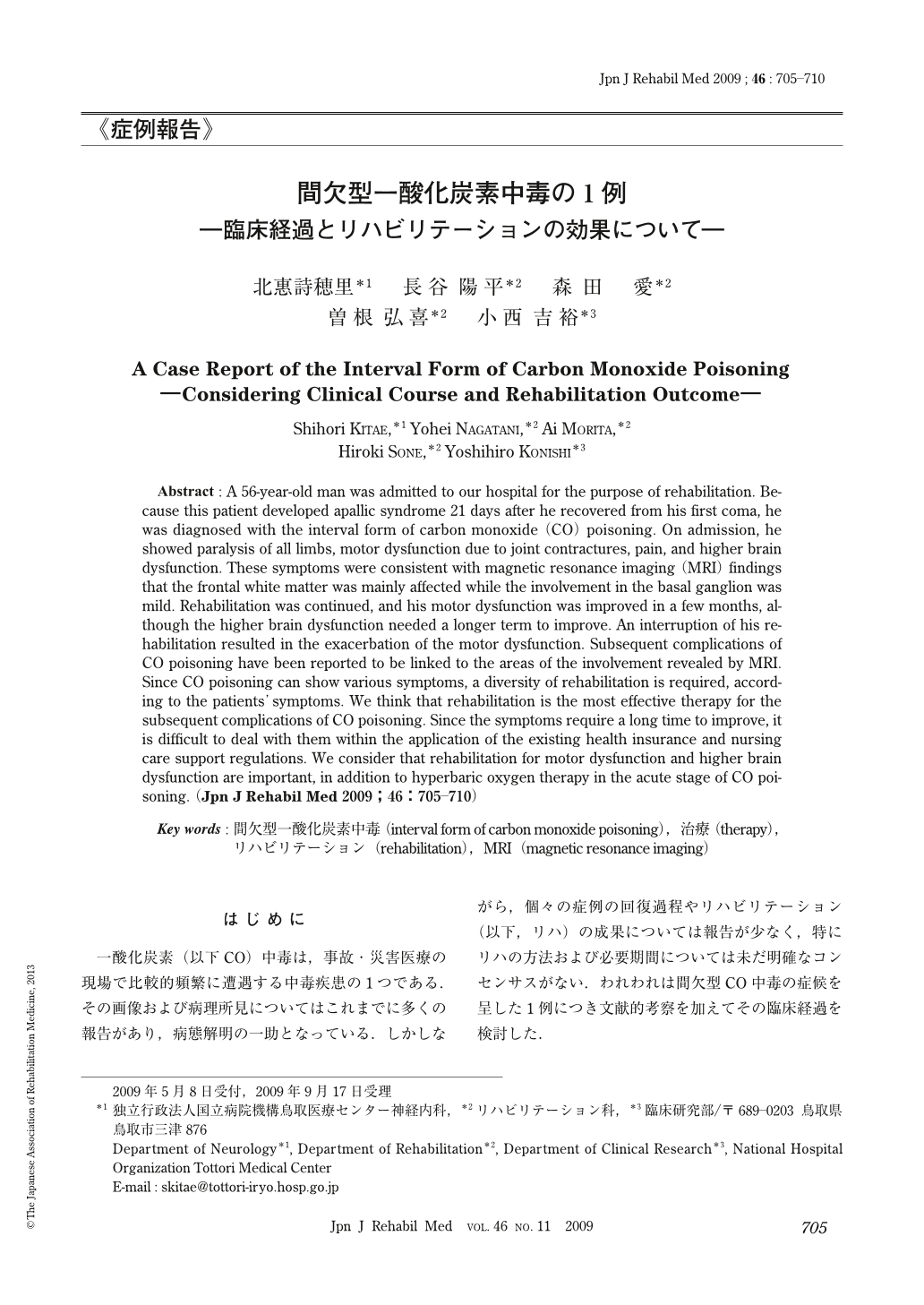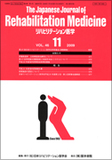Japanese
English
- 販売していません
- Abstract 文献概要
- 1ページ目 Look Inside
- 参考文献 Reference
はじめに
一酸化炭素(以下CO)中毒は,事故・災害医療の現場で比較的頻繁に遭遇する中毒疾患の1つである.その画像および病理所見についてはこれまでに多くの報告があり,病態解明の一助となっている.しかしながら,個々の症例の回復過程やリハビリテーション(以下,リハ)の成果については報告が少なく,特にリハの方法および必要期間については未だ明確なコンセンサスがない.われわれは間欠型CO中毒の症候を呈した1例につき文献的考察を加えてその臨床経過を検討した.
Abstract : A 56-year-old man was admitted to our hospital for the purpose of rehabilitation. Because this patient developed apallic syndrome 21 days after he recovered from his first coma, he was diagnosed with the interval form of carbon monoxide (CO) poisoning. On admission, he showed paralysis of all limbs, motor dysfunction due to joint contractures, pain, and higher brain dysfunction. These symptoms were consistent with magnetic resonance imaging (MRI) findings that the frontal white matter was mainly affected while the involvement in the basal ganglion was mild. Rehabilitation was continued, and his motor dysfunction was improved in a few months, although the higher brain dysfunction needed a longer term to improve. An interruption of his rehabilitation resulted in the exacerbation of the motor dysfunction. Subsequent complications of CO poisoning have been reported to be linked to the areas of the involvement revealed by MRI. Since CO poisoning can show various symptoms, a diversity of rehabilitation is required, according to the patients'symptoms. We think that rehabilitation is the most effective therapy for the subsequent complications of CO poisoning. Since the symptoms require a long time to improve, it is difficult to deal with them within the application of the existing health insurance and nursing care support regulations. We consider that rehabilitation for motor dysfunction and higher brain dysfunction are important, in addition to hyperbaric oxygen therapy in the acute stage of CO poisoning.

Copyright © 2009, The Japanese Association of Rehabilitation Medicine. All rights reserved.


